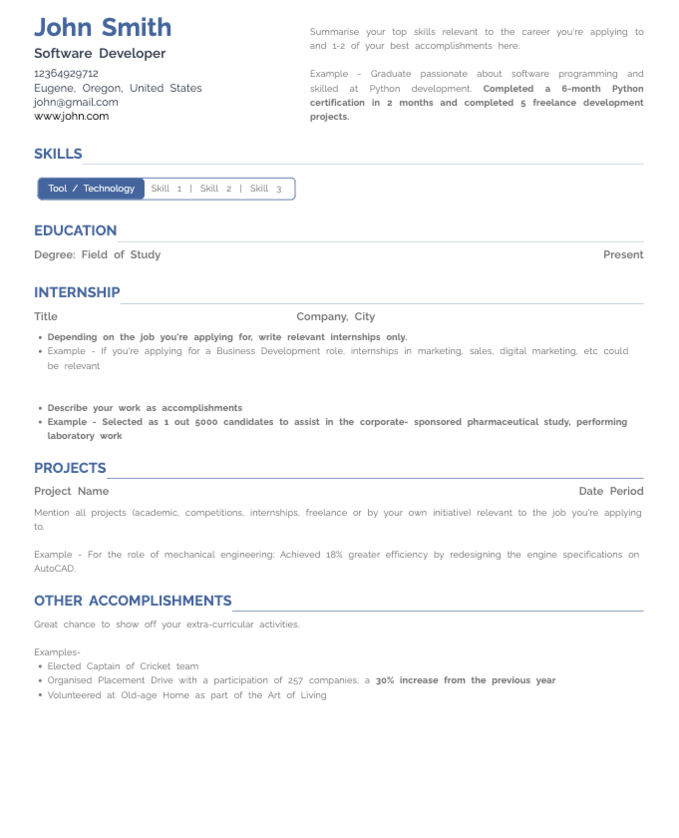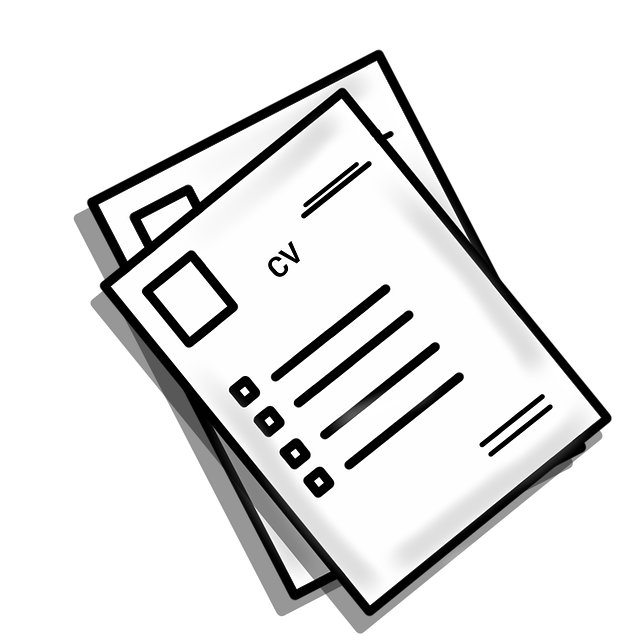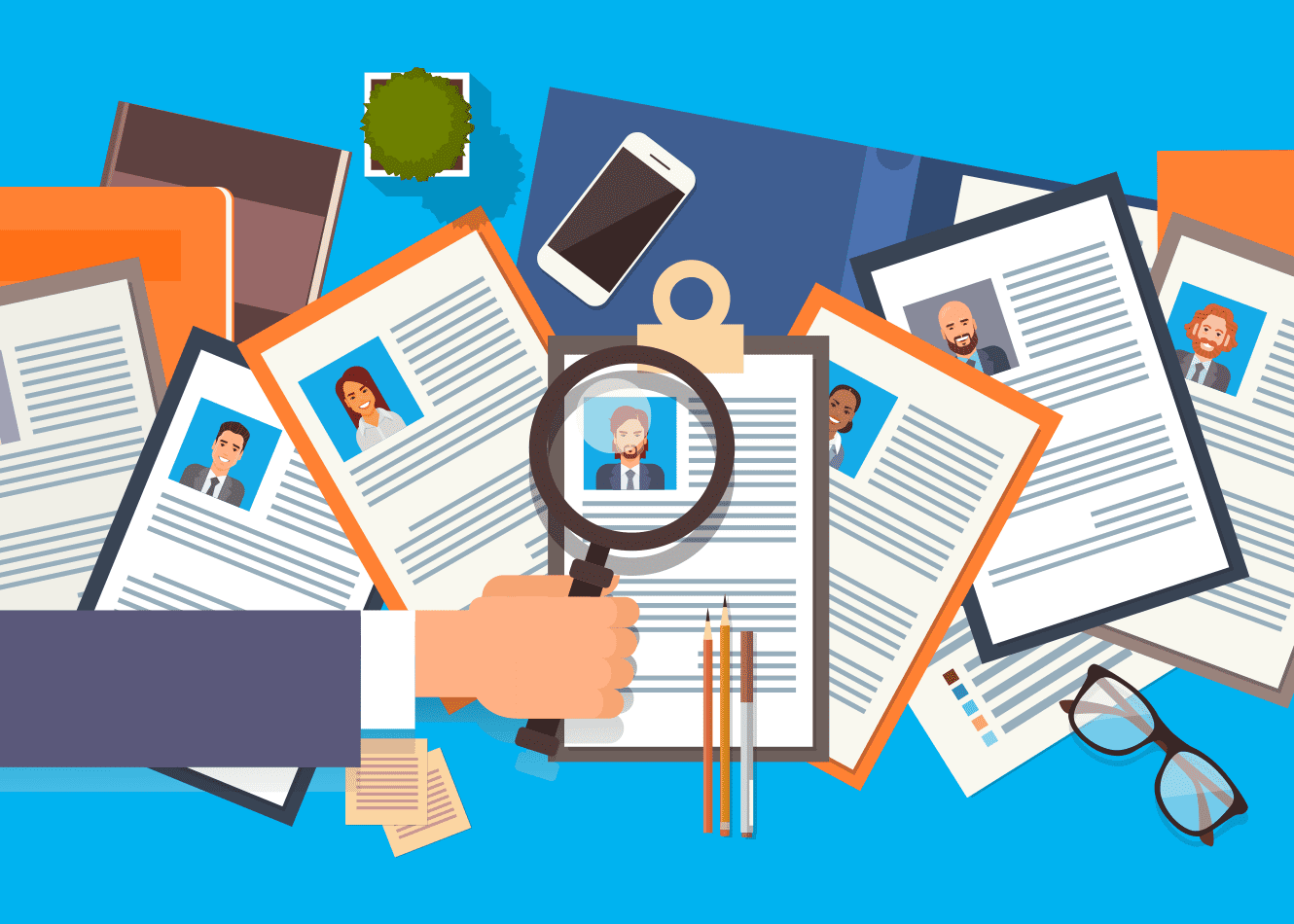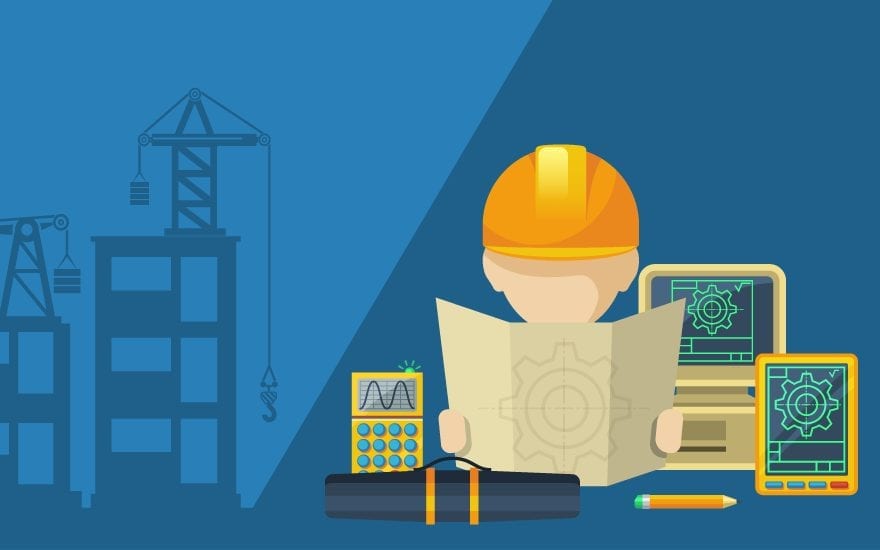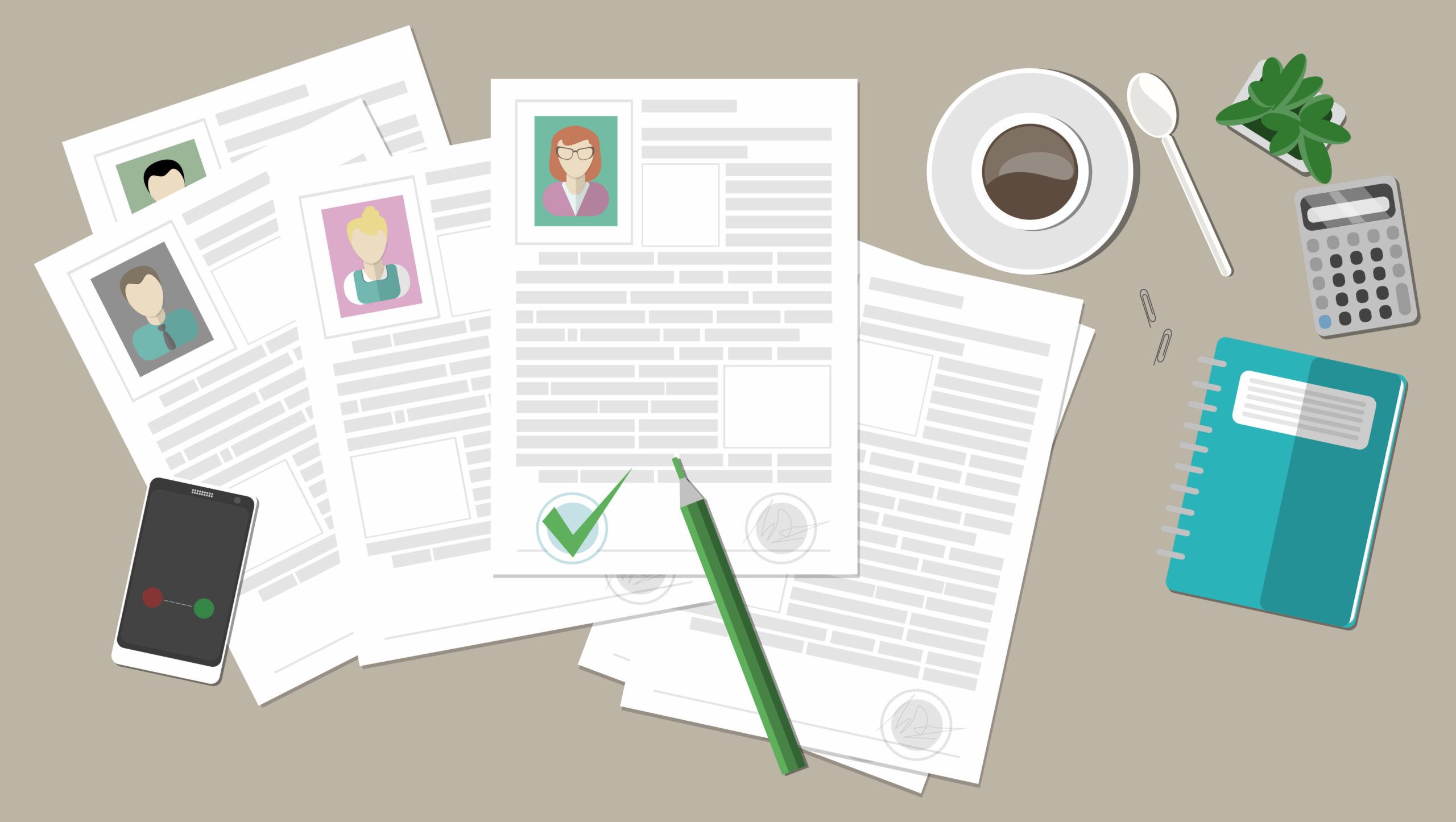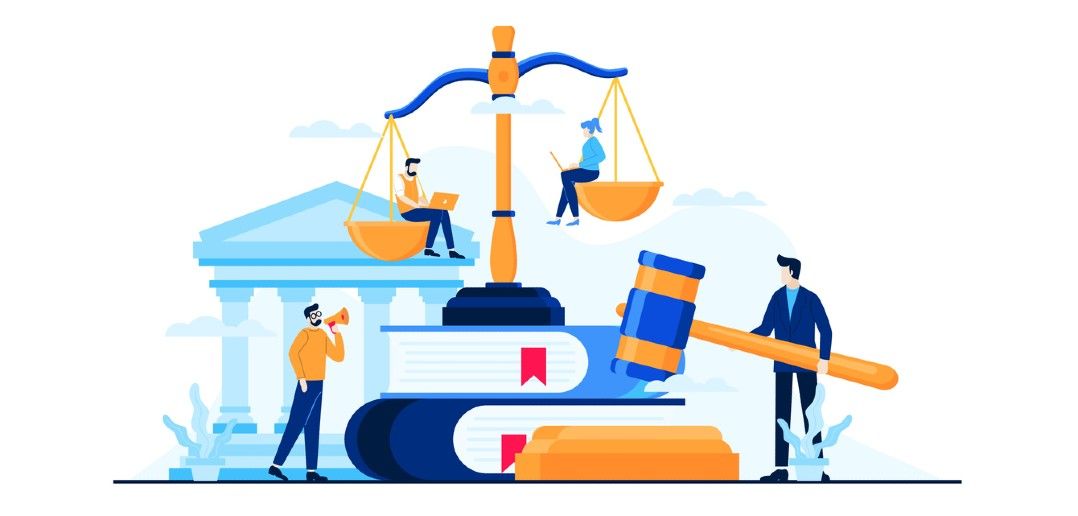Pilot Resume Examples - Aviation CV Template [12+ Writing Tips]
5 Minutes read
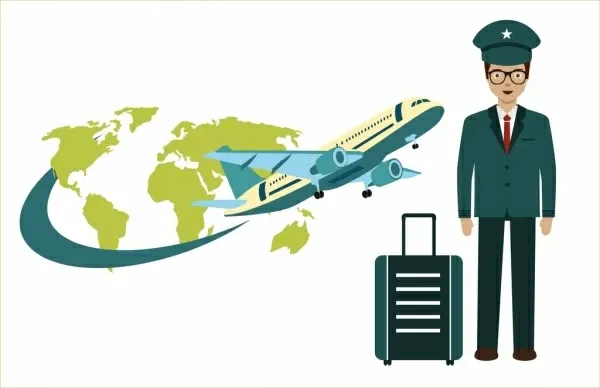
Are you an aspiring pilot?
If yes, then you are soon going to need a professional resume for pilot jobs to start your career.
Resume building can sometimes be exhausting even for experienced professionals. Hence, we are here to help all the freshers and experienced pilots to craft job-winning resumes by answering the following questions:
- What are the fundamental duties of a pilot?
- How to become a commercial pilot in India?
- How to craft a resume for pilot jobs?
- How much does a commercial pilot earn in India?
Though we are listing every essential step to craft a professional pilot resume, you can dodge them all by using HyreSnap Online Resume Builder. It is a free resume building platform powered by Artificial Intelligence technology.
For instance, below are some highlighting points that you are going to study in detail while reading this guide:
Let's move ahead and get detailed instructions on how to build a professional pilot resume in 2023:
Pilots are responsible for safely operating and navigating aircraft, ensuring the safety of passengers and crew, and adhering to aviation regulations. Their fundamental responsibilities include:
- Flight Operations: Safely operating and managing the aircraft during all phases of flight, including takeoff, cruise, and landing.
- Passenger and Crew Safety: Ensuring the safety and well-being of passengers and crew members on board the aircraft.
- Pre-flight Planning: Conducting thorough pre-flight planning, which includes reviewing weather conditions, flight plans, and aircraft systems.
- Weight and Balance: Calculating fuel requirements, managing weight distribution, and securing cargo to maintain proper balance and stability.
- Aircraft Inspection: Conducting pre-flight inspections to ensure the aircraft's airworthiness, including checking for any mechanical or structural issues.
- Systems Management: Monitoring and adjusting the aircraft's systems, such as engines, navigation, communication, and avionics systems, during flight.
- Navigation: Navigating the aircraft using various instruments, including GPS, radar, and navigation charts, to ensure it follows the planned route.
- Communication: Maintaining clear and effective communication with air traffic control (ATC) for obtaining clearances, instructions, and updates throughout the flight.
- Crew Coordination: Collaborating with co-pilots and cabin crew to ensure a coordinated and safe flight.
- Safety Procedures: Conducting pre-flight safety briefings for passengers and crew, ensuring proper stowage of cabin baggage, and monitoring cabin safety during the flight.
- Emergency Response: Implementing emergency procedures and protocols in the event of unforeseen circumstances, such as turbulence, equipment failure, medical emergencies, or security threats.
- Decision-Making: Making critical decisions during emergencies, including engine failures, extreme weather conditions, diversions, and other contingencies.
- Risk Assessment: Evaluating risks and determining whether to proceed with a flight, delay it, or cancel it based on safety concerns.
- Documentation: Completing pre-flight checklists, maintaining flight logs, and documenting any incidents, issues, or unusual occurrences during the flight.
- Continuous Learning: Staying up-to-date with industry regulations, best practices, and technological advancements through ongoing training and education.
- Passenger Service: Ensuring passenger comfort by controlling cabin temperature, pressure, and lighting, and providing information and assistance to passengers when needed.
- Regulatory Compliance: Adhering to aviation regulations and standards set by national and international aviation authorities.
- Airline Policies: Complying with specific policies and procedures established by the airline or aircraft operator.
- Emergency Preparedness: Participating in regular emergency response drills and simulations to maintain readiness in case of emergencies.
- Crisis Management: Knowing how to respond to various emergency situations, such as evacuations, fires, or security threats, to ensure the safety of passengers and crew.
Pilots bear a significant responsibility for the safety and well-being of everyone on board their aircraft. Their training, experience, and commitment to safety are essential in fulfilling these fundamental responsibilities.
Becoming a commercial pilot in India involves several steps, including education, flight training, certifications, and gaining experience. Here's a general overview of the process:
Start by completing your 10+2 (or equivalent) education with Physics and Mathematics as compulsory subjects. Most flight schools and aviation academies require this educational background.
Undergo a medical examination by a Directorate General of Civil Aviation (DGCA) approved Medical Examiner to obtain a Class II Medical Certificate. This certificate is necessary for flight training.
Enroll in a DGCA-approved flight training school to obtain a Private Pilot License (PPL). This phase involves ground school instruction and flight training, typically covering a minimum of 40-50 hours of flying.
After obtaining a PPL, continue flight training to accumulate a total of 200 hours of flight time (which includes your PPL hours). This includes both solo and dual flying hours.
Post that, you must pass the DGCA CPL theory examinations, which cover subjects like Air Navigation, Meteorology, Aircraft and Engines, and more.
Once you meet the required flight hours and pass the theory exams, you can apply for a CPL. The DGCA will conduct a flight test, and upon successful completion, you'll be issued a CPL.
To increase your employability, consider obtaining a Multi-Engine Rating (MER) and an Instrument Rating (IR). These additional ratings will allow you to operate multi-engine and instrument-equipped aircraft.
Depending on the airline and aircraft type, you may need to acquire a specific type rating, which involves additional training and certification.
To work as a commercial pilot with an airline, you'll need to obtain an Airline Transport Pilot License (ATPL). This typically requires a minimum of 1500 hours of flight time, including your CPL hours.
To accumulate the required flight hours, many aspiring commercial pilots work as flight instructors, banner tow pilots, or in other aviation-related roles.
Once you have the required flight hours and licenses, you can start applying to airlines for pilot positions.
Airlines have their selection processes, which may include interviews, simulator assessments, and medical evaluations.
After joining an airline, you'll continue to receive training and evaluations throughout your career.
Crafting a professional resume for pilot jobs is essential to showcase your qualifications, skills, and experience effectively. Here's a step-by-step guide on how to create an impressive pilot resume:
Include your full name, address, phone number, and a professional email address at the top of the resume. Make it easy for potential employers to contact you.
Write a concise resume summary or resume objective statement that highlights your qualifications, experience, and career goals as a pilot. Tailor this section to the specific job you're applying for.
List your pilot certifications and licenses prominently. Include your Airline Transport Pilot License (ATPL), Commercial Pilot License (CPL), Multi-Engine Rating (MER), and any other relevant ratings.
Mention your total flight hours and hours on specific aircraft types, if applicable. This information is crucial for pilot positions.
Detail your educational background, including the institution's name, degree obtained, graduation date, and relevant coursework.
List the flight training schools or academies you attended, along with the type of training received, total flight hours, and any notable achievements.
Provide a summary of your flight experience, including the types of aircraft you've operated, routes flown, and any specialized experience (e.g., instrument flight).
Highlight the specific aircraft types you are qualified to operate, especially if they align with the job you're applying for.
Showcase your aviation-related skills, such as navigation, communication, flight planning, and emergency procedures.
Include any awards, recognitions, commendations or key achievements in resume you've received during your aviation career.
Mention any simulator training you've undergone, especially if it's relevant to the job.
If you're a member of any aviation organizations or associations, such as the Air Line Pilots Association (ALPA), mention them in this section.
If you have non-flying work experience that is relevant to the aviation industry (e.g., flight instructor, ground crew), include it in your resume.
Customize your resume for each job application by emphasizing the qualifications and experiences most relevant to the specific pilot position you're applying for.
When describing your responsibilities and achievements, use strong action verbs (e.g., piloted, navigated, coordinated) to convey your skills and contributions effectively.
Carefully proofread your resume to eliminate spelling and grammatical errors. Ensure that your resume is clear, concise, and free of typos.
Maintain a clean and professional format throughout your resume. Use a legible font, consistent resume format, and bullet points for clarity.
Unless specifically requested, you can omit the "References" section. It's understood that you can provide references upon request.
Save your resume as a PDF to ensure that the formatting remains intact when it's viewed by potential employers.
By following these steps and tailoring your resume to the specific pilot job you're applying for, you can create a strong and compelling resume that highlights your qualifications and increases your chances of landing the position you desire.
Below you can see a sample resume for pilots that you can use as a reference while crafting your pilot resume in 2023:
Sample Resume For Pilot Jobs:
[Your Name]
[Your Address]
[City, State, Zip Code]
[Your Email Address]
[Your Phone Number]
[LinkedIn Profile (Optional)]
Objective:
Dedicated and experienced pilot with a strong track record of safe and efficient flight operations. Seeking to contribute my skills and expertise to IndiGo Airlines as a [Specify Position, e.g., First Officer] to ensure the highest standards of aviation safety and customer satisfaction.
Certifications and Licenses:
- Airline Transport Pilot License (ATPL)
- Commercial Pilot License (CPL)
- Multi-Engine Rating (MER)
- [Any other relevant certifications or ratings]
Flight Hours:
- Total Flight Hours: [Specify Total Hours]
- Hours on Airbus A320: [Specify Hours]
- [List any other relevant flight hours or aircraft types]
Education:
Bachelor of Science in Aviation
[University Name], [Location]
[Year of Graduation]
Flight Training:
[Flight School/Academy Name], [Location]
Type of Training: [e.g., CPL, MER]
Total Flight Hours: [Specify Hours]
Graduation Date: [Month Year]
Work Experience:
Pilot - IndiGo Airlines, [Base Location]
[Month Year] - Present
- Safely operate Airbus A320 aircraft on domestic and international routes, consistently adhering to the highest aviation safety standards.
- Collaborate with the flight crew to ensure smooth and efficient flight operations.
- Execute pre-flight checks, flight planning, and post-flight procedures with precision.
- Maintain clear and effective communication with air traffic control and cabin crew.
- Conduct thorough pre-flight safety briefings for passengers.
- Monitor and manage cabin safety during flights, ensuring passenger comfort and well-being.
- Successfully navigate and operate aircraft in various weather conditions.
- Respond to emergency situations with composure and efficiency, prioritizing safety at all times.
- Collaborate with maintenance teams to report and address any aircraft issues promptly.
- Maintain detailed flight logs and records, including incident reports and flight hour documentation.
Flight Instructor - [Previous Flight School], [Location]
[Month Year] - [Month Year]
- Provided flight instruction to aspiring pilots, emphasizing safety and proficiency.
- Conducted ground school lessons on aviation theory, regulations, and procedures.
- Facilitated flight simulator training to develop instrument flying skills.
- Prepared students for various flight examinations, including CPL and PPL.
- Mentored and guided students through their flight training journey.
Skills:
- Exceptional flying skills and knowledge of aviation regulations.
- Strong communication and teamwork abilities.
- Proficient in cockpit management and navigation.
- Expertise in aircraft systems and emergency procedures.
- Adherence to strict safety protocols.
- Decision-making and problem-solving under pressure.
Languages:
[List languages you are proficient in, if applicable]
References:
Available upon request.
The salary of a commercial pilot in India can vary significantly based on several factors, including the type of airline, experience, aircraft type, and position within the airline. Here's a general salary range for commercial pilots in India:
- Starting Salary of Pilot (First Officer): Commercial pilots starting their careers as First Officers (co-pilots) at regional or smaller airlines can expect a monthly salary in the range of ₹1.5 lakhs to ₹3 lakhs or more. Starting salaries may vary based on the airline's policies and location.
- Experienced First Officers: With a few years of experience and flight hours, First Officers can earn monthly salaries ranging from ₹3 lakhs to ₹6 lakhs or more, depending on the airline and aircraft type.
- Captains (Commanders): Captains or Commanders (pilots-in-command) with significant experience and the responsibility of flying large aircraft often earn higher salaries. Captain salaries can range from ₹6 lakhs to ₹15 lakhs per month or more, depending on the airline and aircraft.
- Type of Aircraft: The type of aircraft flown can impact salary. Pilots flying wide-body, long-haul aircraft generally earn higher salaries than those flying narrow-body, short-haul planes.
- International Routes: Pilots operating on international routes may receive additional allowances or higher salaries compared to domestic route pilots.
- Additional Allowances: Airlines may provide various allowances, such as housing, transport, meal, and layover allowances, which can significantly enhance a pilot's overall compensation.
- Bonuses and Incentives: Many airlines offer performance-based bonuses and incentives, such as productivity bonuses, retention bonuses, and safety bonuses.
- Years of Experience: The number of years of flying experience is a significant factor in determining a pilot's salary. More experienced pilots typically earn higher incomes.
It's important to note that these figures are approximate and can vary based on the airline, location (metros and tier 1 cities often offer higher salaries), and economic conditions.
You can use these above-given guidelines to build a job-winning resume for pilot jobs in 2023. However, we recommend using HyreSnap Online Resume Builder to ease the process and save a lot of your time.
It is a modern resume making platform that uses Artificial Intelligence technology to build impeccable pilot resumes in less than 15 minutes. You can check its key features listed below:
Key Takeaways
We have listed all the key instructions to help you build an impeccable pilot resume in easy steps. In case you missed anything while reading, check out the key takeaways mentioned below:
Apart from this, if you have any confusion or query regarding career-building, please contact our experts at info@hyresnap.com. We will help you get rid of all the career-framing hurdles in easy steps.
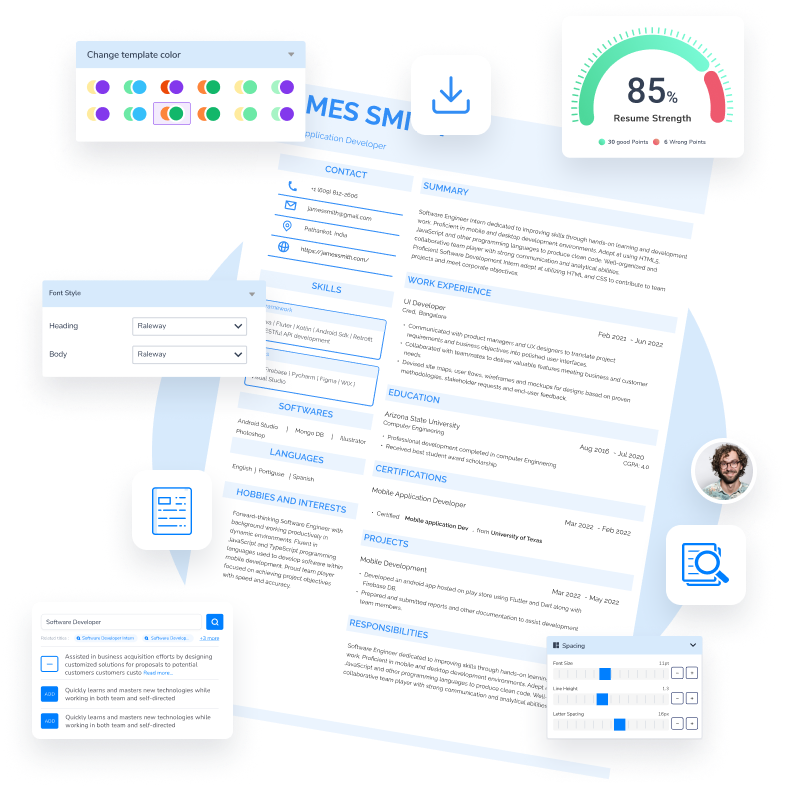
Try Now for Free!
